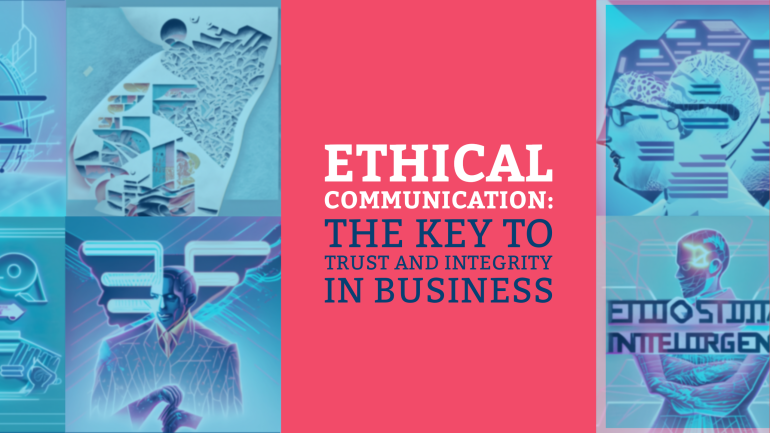This website uses cookies so that we can provide you with the best user experience possible. Cookie information is stored in your browser and performs functions such as recognising you when you return to our website and helping our team to understand which sections of the website you find most interesting and useful.
Table of Contents
TL;DR: Improving Workplace Climate
- Open and Transparent Communication: Foster a culture of honest and open feedback between staff and management to address concerns effectively.
- Regular Feedback Mechanisms: Implement ongoing surveys, suggestion boxes, or one-on-one meetings to collect staff feedback and continuously improve the workplace climate.
- Addressing Issues Promptly: Take immediate action on feedback received to show staff that their opinions are valued and that positive change is possible.
- Recognize and Reward Feedback: Acknowledge and appreciate staff members who provide constructive feedback, encouraging others to do the same.
- Commitment to Continuous Improvement: Demonstrate a long-term commitment to improving workplace climate by regularly evaluating feedback and making necessary adjustments.
With the ever-evolving nature of today’s workforce, staff feedback has become a vital tool for organizations looking to enhance their workplace climate. A positive workplace environment not only fosters employee satisfaction and productivity but also contributes to overall employee retention and organizational success. In this blog post, we will research into the significance of staff feedback in creating a positive workplace climate and explore strategies that can be implemented to effectively gather and utilize feedback from employees to drive positive change within the organization.
Fundamentals of Staff Feedback
Types of Feedback Mechanisms
Some organizations may utilize various feedback mechanisms to gather input from their staff. These mechanisms can include surveys, suggestion boxes, one-on-one meetings, team discussions, and anonymous feedback tools. Each of these methods offers a unique way for employees to provide their thoughts and opinions on the workplace environment and overall satisfaction.
| Surveys | Structured questionnaire |
| Suggestion boxes | Physical or digital submission |
| One-on-one meetings | Personal interaction with supervisors |
| Team discussions | Group brainstorming sessions |
| Anonymous feedback tools | Confidential platforms for feedback |
After implementing these mechanisms, organizations can analyze the feedback received to identify areas for improvement and make informed decisions to enhance the workplace climate.
Establishing Effective Feedback Channels
With establishing effective feedback channels, organizations can create a culture that values open communication and employee input. By providing various avenues for feedback, such as regular surveys, accessible suggestion boxes, and ongoing training on feedback skills, companies can ensure that staff feel heard and valued. Feedback should be encouraged at all levels of the organization, from frontline employees to senior management, to foster a collaborative and inclusive work environment.
Analyzing Feedback for Actionable Insights
Qualitative vs. Quantitative Feedback
Now, when it comes to analyzing feedback from your staff, there are two main types to consider: qualitative and quantitative feedback. Qualitative feedback involves open-ended responses that can provide more in-depth insights into the emotions and opinions of your employees. On the other hand, quantitative feedback involves numerical data that can be measured and analyzed for trends and patterns.
Turning Feedback into Strategic Plans
To effectively improve workplace climate, it is crucial to turn feedback into strategic plans. This involves identifying key themes and issues that arise from the feedback and using them to create actionable steps for improvement. By translating feedback into targeted strategies, organizations can address the root causes of dissatisfaction and enhance employee engagement and satisfaction.
into By incorporating feedback into strategic planning processes, organizations can foster a more transparent and collaborative work environment. This approach helps to prioritize initiatives that directly impact employee morale and productivity, leading to a more positive and productive workplace.
Implementing Changes and Monitoring Progress
Best Practices for Change Management
For successful implementation of changes in the workplace, it is crucial to involve staff in the decision-making process. This creates a sense of ownership and commitment among employees. Communicate clearly the reasons for the change and how it aligns with the organization’s goals. Provide adequate training and support to help staff adapt to the new ways of working. Encourage open dialogue and feedback to address any concerns effectively.
Setting Metrics and Evaluating Impact
Metrics play a crucial role in monitoring progress and evaluating the impact of changes made in the workplace climate. Define clear and specific metrics that align with the objectives of the changes. Measure key performance indicators regularly to track progress. Analyze the data collected to identify areas of improvement and areas that require further attention. Adjust strategies as needed based on the results.
Implementing a system for regular feedback from staff helps in gauging the effectiveness of the implemented changes. It also allows you to identify any issues or challenges that may arise so they can be addressed promptly. By setting clear metrics and evaluating impact, you can ensure that the changes made are contributing positively to the overall workplace climate and employee satisfaction.
Fostering Ongoing Dialogue and Continuous Improvement
Creating an Open-Feedback Culture
One of the key elements in improving workplace climate is the establishment of an open-feedback culture. Allowing employees to share their thoughts and ideas without fear of retribution promotes transparency and trust within the organization. By encouraging open communication channels, leaders can gain valuable insights to address issues and implement positive change.
Ensuring Sustainable Engagement and Participation
Sustainable engagement and participation are crucial for maintaining a positive workplace climate. It is vital to create mechanisms that continuously involve employees in decision-making processes and initiatives. By fostering a culture where feedback is valued and acted upon, organizations can ensure sustained engagement, boost morale, and increase productivity.
OpenFeedback: Implementing regular feedback mechanisms such as surveys, one-on-one sessions, and suggestion boxes is vital for creating an open-feedback culture. Additionally, leaders should be proactive in responding to feedback and communicating the actions taken based on employee input. Regularly seeking and acting upon feedback demonstrates a commitment to continuous improvement and creates a sense of empowerment among staff.
Conclusion
To wrap up, utilizing staff feedback is a powerful tool in improving workplace climate. By actively listening to employees’ opinions, concerns, and suggestions, leadership can address issues, implement positive changes, and ultimately create a more engaged and productive work environment. It is imperative for organizations to prioritize regular communication channels that allow for open feedback from staff, as this fosters a culture of transparency, trust, and collaboration. Overall, a commitment to incorporating staff feedback is not only beneficial for employee satisfaction and retention but also contributes to the overall success and growth of the organization.
FAQ
Q: Why is staff feedback important for improving workplace climate?
A: Staff feedback is crucial for improving workplace climate as it provides insights into employee experiences, concerns, and suggestions. This input helps organizations identify areas for improvement and implement strategies to enhance employee morale and productivity.
Q: How can organizations collect staff feedback effectively?
A: Organizations can collect staff feedback effectively through various channels such as surveys, suggestion boxes, one-on-one meetings, and anonymous feedback mechanisms. It is crucial to create a safe and open environment where employees feel comfortable sharing their thoughts and ideas.
Q: What are the benefits of incorporating staff feedback into decision-making processes?
A: Incorporating staff feedback into decision-making processes leads to increased employee engagement, motivation, and job satisfaction. It also helps in fostering a culture of transparency, trust, and collaboration within the organization.
Q: How should organizations address and act upon staff feedback?
A: Organizations should analyze staff feedback patterns, prioritize issues based on significance and frequency, and develop action plans to address them promptly. It is crucial to communicate follow-up actions to employees and involve them in the process of implementing solutions.
Q: What role does leadership play in leveraging staff feedback to improve workplace climate?
A: Leadership plays a vital role in leveraging staff feedback by actively listening to employees, leading by example, and demonstrating a commitment to continuous improvement. When leaders value and act upon staff feedback, it fosters a positive work culture and drives organizational success.





